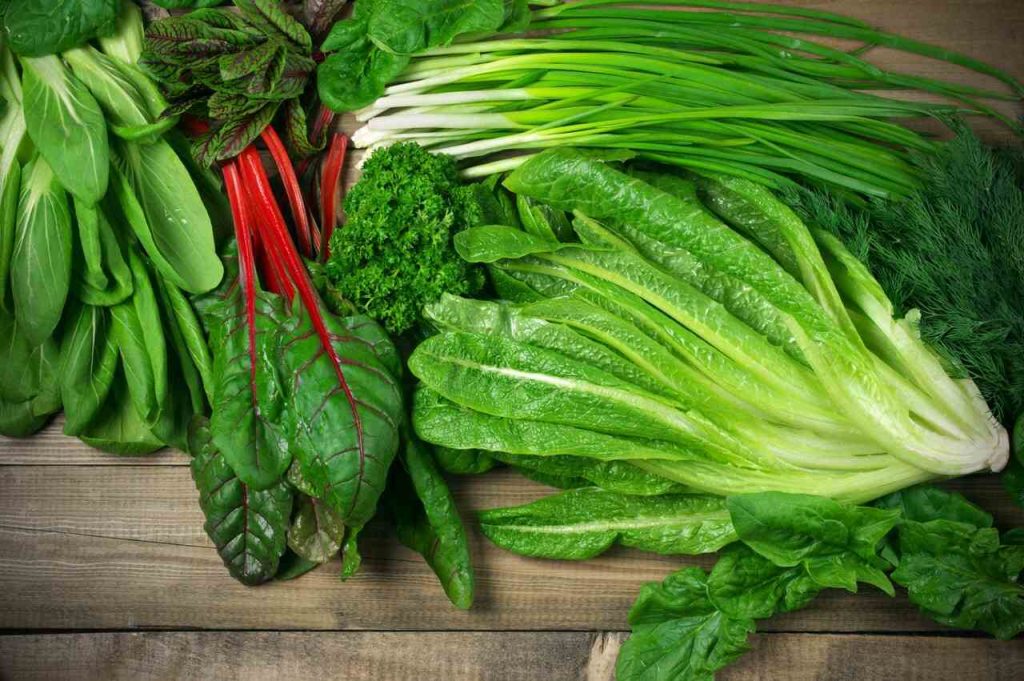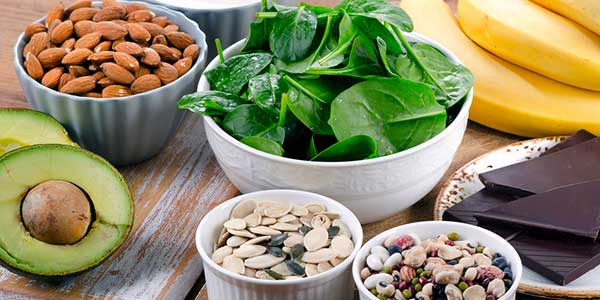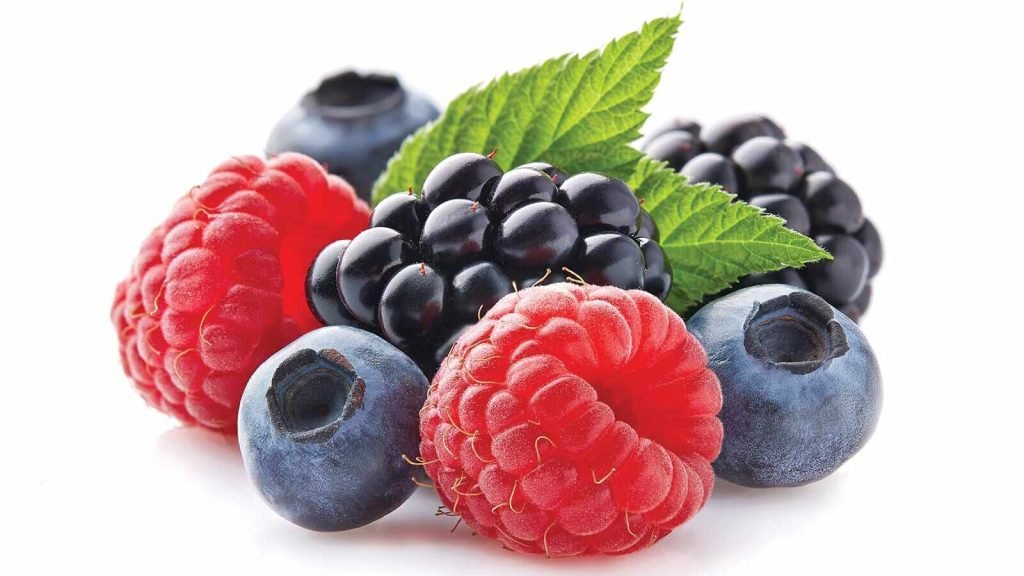Introduction:
Foods Good For Migraines are debilitating headaches that can disrupt daily life with intense pain, sensitivity to light, nausea, and sometimes visual disturbances. While various factors contribute to triggering migraines, including stress, environmental changes, and sleep patterns, diet plays a significant role in either mitigating or worsening these episodes. Incorporating the right foods into your diet can help reduce the frequency and severity of migraines. Here’s a guide to foods that are good for managing migraines.
1.Leafy Greens

Leafy greens like spinach, kale, and Swiss chard are packed with magnesium, a mineral known for its potential in reducing migraine symptoms. Magnesium helps relax blood vessels, and studies have shown that people with migraines often have lower magnesium levels. Incorporating a healthy portion of these vegetables into your diet can improve brain health and reduce inflammation.
Tip: Add spinach to your smoothies or salads, and try a side of sautéed Swiss chard for a magnesium-rich meal.
2.Fatty Fish
Salmon, mackerel, and sardines are rich in omega-3 fatty acids, which have powerful anti-inflammatory properties. Since inflammation can be a trigger for migraines, eating fatty fish at least twice a week may help to decrease migraine occurrences. Omega-3s can reduce the frequency and intensity of migraines by improving brain cell function and reducing inflammatory markers.
Tip: Grill or bake your fish and pair it with a leafy green salad for a double dose of migraine-fighting nutrients.
3.Nuts and Seeds
Almonds, flaxseeds, and sunflower seeds are excellent sources of both magnesium and omega-3 fatty acids. These nutrients work together to reduce inflammation and promote brain health. In addition, almonds contain salicin, which is a natural pain reliever. Nuts and seeds make for a great snack option or can be sprinkled on top of salads, yogurt, or oatmeal.
Tip: Carry a small bag of almonds or a mix of seeds to snack on during the day to help keep migraines at bay.
4.Whole Grains
Whole grains such as quinoa, brown rice, oats, and whole wheat contain fiber and essential nutrients that help regulate blood sugar levels. Blood sugar spikes and dips can trigger migraines, so it’s important to maintain stable energy levels. Whole grains provide slow-releasing carbohydrates that ensure a steady stream of energy, helping to avoid the onset of migraines.
Tip: Start your day with a bowl of oatmeal topped with seeds and fresh berries, or use whole grains as a base for lunch bowls and salads.
5.Ginger
Ginger has been used as a natural remedy for various ailments, including nausea and headaches. It contains compounds that reduce inflammation and block prostaglandins, chemicals in the body that promote muscle contractions, control inflammation, and impact migraines. Research suggests that ginger can be as effective as common pain relief medications for reducing migraine symptoms.
Tip: Make fresh ginger tea by steeping ginger root in hot water or add ginger to your smoothies, stir-fries, or soups.
6.Berries
These antioxidants help combat oxidative stress and inflammation, which can be major contributors to migraines. Consuming berries regularly may help reduce the duration and intensity of migraine attacks.
Tip: Enjoy a berry-packed smoothie or yogurt bowl as a refreshing, antioxidant-rich snack.
7.Sweet Potatoes
Sweet potatoes are rich in complex carbohydrates, fiber, and vitamins like vitamin C and B6, which are essential for brain health. Vitamin B6, in particular, plays a role in the production of neurotransmitters like serotonin and dopamine, which help regulate mood and pain perception. Eating sweet potatoes can help stabilize blood sugar levels and improve energy balance, reducing the risk of migraines.
Tip: Roast sweet potatoes as a side dish or mash them with a bit of olive oil and herbs for a nutritious, migraine-friendly meal.
8.Water-Rich Foods
Dehydration is a common migraine trigger. Consuming water-rich foods like cucumbers, watermelon, and celery can help keep you hydrated throughout the day. These foods also contain essential electrolytes like potassium, which are important for maintaining proper fluid balance in the body.
Tip: Snack on cucumber slices with hummus or enjoy a refreshing watermelon salad to stay hydrated and energized.
9.Herbal Teas
Herbal teas like peppermint, chamomile, and feverfew are known for their headache-relieving properties. Feverfew, in particular, has been studied for its ability to prevent migraines by reducing inflammation and inhibiting the release of substances that can cause blood vessels to constrict. Peppermint tea helps relax muscles and alleviate tension headaches, while chamomile can have a calming effect.
Tip: Sip on a warm cup of herbal tea in the evening to unwind and prevent the onset of migraines triggered by stress.
10.Bananas
Bananas are a great source of magnesium and potassium, both of which play a role in reducing the likelihood of migraines. Potassium helps balance electrolyte levels in the body, especially after dehydration, which can often lead to headaches. Magnesium, on the other hand, has been found to lower the frequency of migraines by supporting healthy blood flow and nerve function.
Tip: Include a banana in your morning breakfast, or grab one as a quick snack to help prevent migraines throughout the day.
Foods to Avoid
While these foods may help prevent migraines, it’s important to be mindful of potential dietary triggers that could worsen or cause an episode. Common culprits include:
Caffeinated beverages (in excess)
Aged cheeses
Processed meats (like bacon or salami, which contain nitrates)
Artificial sweeteners (aspartame)
Alcohol (especially red wine)
Chocolate (for some individuals)
Each person has unique triggers, so keeping a food diary can help identify which foods cause migraines and which alleviate them.
Conclusion
Managing migraines through diet is a natural and effective strategy to reduce the frequency and severity of attacks. Incorporating magnesium-rich foods, omega-3 fatty acids, whole grains, and antioxidant-packed fruits into your daily routine can help balance brain health and minimize inflammation, both of which are key to managing migraines.
What is safe to eat after migraine?
Foods Good For Migraines Recovering from a migraine can be a delicate process. After the intense pain, nausea, and sensitivity to light and sound, your body needs the right nutrients to restore energy, replenish lost fluids, and support recovery. Choosing the right foods post-migraine can make a big difference in how quickly you regain your strength and prevent another episode. Here’s a guide to safe and beneficial foods to eat after a migraine.
1.Hydration First: Water-Rich Foods
Dehydration is often a major contributor to migraines, so one of the first steps after a migraine attack is to rehydrate. While drinking plenty of water is essential, incorporating water-rich foods into your diet can help restore fluids more effectively.
Watermelon: Not only is it refreshing, but watermelon is also about 90% water. It’s easy to digest and provides quick hydration.
Cucumbers: These are also high in water content and are gentle on the stomach, making them a great post-migraine snack.
Celery: Along with water, celery contains potassium and sodium, which help regulate electrolyte balance.
Tip: Prepare a light cucumber and watermelon salad with a sprinkle of salt to balance your electrolytes after a migraine.
2.Light, Simple Carbohydrates
After a migraine, your digestive system might still feel sensitive, especially if you experienced nausea or vomiting. Opting for easily digestible, bland carbohydrates can provide a gentle source of energy without overwhelming your stomach.
Plain Crackers: Simple, unsalted crackers are mild and won’t upset your stomach while offering a source of carbohydrates to help restore energy.
Toast: Whole grain or white bread toast can give you energy and stabilize your blood sugar levels after a migraine.
Rice or Quinoa: These grains are easy on the stomach and provide essential carbohydrates. Choose plain rice or quinoa, and avoid heavy seasonings or sauces that might trigger a new headache.
Tip: Pair a small portion of rice or quinoa with a little bit of boiled chicken or steamed vegetables for a balanced meal.
3.Magnesium-Rich Foods

Magnesium is often recommended for migraine sufferers because it helps relax blood vessels and reduce inflammation, both of which can trigger or prolong migraine episodes. After a migraine, including magnesium-rich foods in your meal plan can support your recovery.
Spinach: This leafy green is rich in magnesium and gentle on the stomach. Lightly steam or sauté it to make it easier to digest.
Almonds: A small handful of almonds provides magnesium and healthy fats to help replenish your body after the stress of a migraine.
Avocados: Avocados are packed with magnesium, potassium, and healthy fats. They are also creamy and easy to eat, making them a good choice after a migraine.
Tip: Blend spinach and avocado into a smoothie or enjoy a spinach salad with almonds and a light dressing.
4.Lean Protein
Your body needs protein to repair and maintain muscle tissue, and consuming lean protein can help stabilize your blood sugar levels, which may have dipped during a migraine. Protein also helps prevent future episodes by balancing hormones and neurotransmitter production.
Chicken or Turkey: These lean proteins are easy to digest and provide essential amino acids. Opt for boiled or grilled poultry without heavy seasoning.
Eggs: Eggs are a great source of protein, and they’re light on the stomach. A boiled or scrambled egg can be an easy-to-eat option after a migraine.
Greek Yogurt: High in protein and probiotics, Greek yogurt can help restore your body’s energy and digestion after a migraine.
Tip: Make a light chicken soup with boiled chicken, spinach, and plain rice for a comforting, post-migraine meal.
5.Electrolyte-Rich Foods
Migraine attacks often lead to electrolyte imbalances due to dehydration, especially if vomiting occurred. Replenishing your electrolytes through food can help restore balance and prevent further headaches.
Bananas: Rich in potassium, bananas are easy to digest and help replace lost electrolytes.
Coconut Water: While technically a drink, coconut water is an excellent source of potassium, magnesium, and sodium, all of which can help restore electrolyte balance.
Potatoes: Plain baked or boiled potatoes (with the skin on) are a great source of potassium, a key electrolyte.
Tip: Try a simple baked potato with a little olive oil and sea salt to get your potassium levels back to normal.
6.Ginger
If your migraine was accompanied by nausea, ginger is a natural remedy known for its anti-nausea properties. It can soothe your stomach and help you feel better faster.
Ginger Tea: Brew fresh ginger in hot water to make a soothing tea that can ease nausea and support digestion.
Ginger Candies: For a quick remedy, ginger candies or chews can help reduce lingering nausea and discomfort after a migraine.
Conclusion
What you eat after a migraine can significantly impact how quickly you recover and how you feel in the hours following the attack. Focus on hydration, light carbohydrates, lean protein, and foods rich in magnesium and potassium to replenish your body and stabilize your energy levels. Avoid heavy, greasy, or overly seasoned foods that may trigger another headache. With the right food choices, you can support your body in recovering from migraines and help prevent future occurrences.
Can eating make migraine better?
Foods Good For Migraines are intense headaches that can severely impact daily life, often accompanied by nausea, sensitivity to light, and even visual disturbances. While many factors can trigger migraines, diet plays a crucial role in both preventing and managing migraine episodes. In some cases, eating the right foods can help alleviate the symptoms and shorten the duration of a migraine. Let’s explore how eating can make migraines better and the types of foods that can support recovery.
1.Regulating Blood Sugar Levels
One of the most common dietary triggers for migraines is fluctuating blood sugar levels. Skipping meals or eating foods high in sugar can cause spikes and dips in glucose, leading to a headache. Eating regularly, with balanced meals that include complex carbohydrates, lean proteins, and healthy fats, can help maintain stable blood sugar levels and reduce the risk of migraines.
Whole grains like oats, brown rice, and quinoa release glucose slowly, providing sustained energy and preventing blood sugar dips.
Lean proteins such as chicken, turkey, and fish stabilize energy levels and prevent fatigue, which can trigger migraines.
Healthy fats like those found in avocados, nuts, and seeds keep you fuller longer and promote brain health, which may reduce migraine frequency.
Tip: Eating small, frequent meals throughout the day can prevent blood sugar fluctuations that contribute to migraines.
2.Magnesium-Rich Foods for Migraine Relief
Magnesium is a mineral known for its ability to reduce the frequency and intensity of migraines. It helps relax blood vessels, supports muscle function, and improves nerve transmission. People who experience migraines often have lower magnesium levels, and consuming magnesium-rich foods may help reduce symptoms or prevent migraines from occurring.
Leafy greens like spinach, kale, and Swiss chard are rich in magnesium and are excellent for promoting brain and vascular health.
Nuts and seeds, including almonds, cashews, and sunflower seeds, are not only rich in magnesium but also provide healthy fats and protein.
Bananas are a good source of magnesium and potassium, making them a great snack for migraine sufferers.
Tip: Add magnesium-rich foods to your daily diet to support brain health and reduce the risk of migraine onset.
3.Hydration Through Food
Foods Good For Migraines Dehydration is a common migraine trigger. While drinking plenty of water is essential, some foods are naturally hydrating and can help you stay hydrated, reducing the likelihood of a migraine attack.
Cucumbers, watermelon, and celery are high in water content and provide essential electrolytes that support hydration.
Soups and broths not only hydrate but also offer electrolytes and nutrients, which can help with recovery during or after a migraine.
Tip: Incorporate hydrating foods into your diet, especially during warmer months, to prevent dehydration-related migraines.
4.Ginger for Nausea and Headache Relief
Migraines are often accompanied by nausea, and ginger is a natural remedy that can help ease both nausea and headache symptoms. Ginger has anti-inflammatory properties and has been shown to be as effective as some migraine medications in reducing headache intensity.
Ginger tea or fresh ginger can be consumed during a migraine to reduce nausea and soothe the digestive system.
Ginger candies or chews can also provide quick relief during an episode.
Tip: Keep ginger tea or ginger candies on hand to help manage migraines with nausea.
Conclusion
Eating the right foods can indeed make migraines better by stabilizing blood sugar levels, providing essential nutrients like magnesium, and supporting hydration. Incorporating these dietary strategies can reduce the frequency and severity of migraines and improve overall well-being. While diet alone may not cure migraines, it plays a critical role in managing symptoms and supporting long-term relief.
What nuts help with migraines?
Migraines can be debilitating, affecting daily life with intense headaches, nausea, and sensitivity to light. While the causes of migraines are multifaceted, diet plays a key role in both triggering and managing these episodes. Nuts, in particular, are known for their health benefits and can help with migraine prevention and relief due to their rich nutrient content. Here’s a look at which nuts help with migraines and how they work to ease symptoms.
1.Almonds: A Magnesium Powerhouse
Almonds are often considered one of the best nuts for migraine sufferers due to their high magnesium content. Magnesium is a mineral known for its ability to relax blood vessels, regulate nerve function, and reduce muscle tension, all of which can help prevent migraines. Studies have shown that people who experience migraines often have lower levels of magnesium, and supplementing with magnesium-rich foods like almonds can reduce the frequency and intensity of migraines.
Why Almonds Help: They contain approximately 76 mg of magnesium per ounce, helping to improve circulation and relax blood vessels, which may prevent migraines.
How to Enjoy: Eat a handful of raw or roasted almonds as a snack, add them to salads, or include almond butter in smoothies.
2.Cashews: Rich in Healthy Fats and Magnesium
Cashews are another nut that can help with migraines, primarily due to their magnesium and healthy fat content. Like almonds, cashews provide magnesium, which is crucial for nerve function and blood flow. Additionally, the healthy fats in cashews can help reduce inflammation, which is often linked to migraine attacks.
Why Cashews Help: Cashews contain around 82 mg of magnesium per ounce and offer heart-healthy fats that promote overall brain health.
How to Enjoy: Snack on cashews by themselves, mix them into a trail mix, or use cashew butter as a spread.
3.Walnuts: Packed with Omega-3 Fatty Acids
Walnuts are well-known for their high content of omega-3 fatty acids, which have anti-inflammatory properties. Inflammation can be a major trigger for migraines, and consuming foods rich in omega-3s, like walnuts, may reduce migraine frequency and intensity. Omega-3s also support overall brain health, which can contribute to fewer migraine episodes over time.
Why Walnuts Help: Walnuts are rich in alpha-linolenic acid (ALA), a type of omega-3 that reduces inflammation and promotes brain function.
How to Enjoy: Add walnuts to oatmeal, sprinkle them over yogurt, or use them as a topping for salads and desserts.
4.Pistachios:
Pistachios are another nut that can help with migraines due to their well-rounded nutrient profile. They provide a good mix of protein, fiber, healthy fats, and magnesium, all of which are important for maintaining stable energy levels and preventing blood sugar fluctuations, a common trigger for migraines. The protein and fiber in pistachios can help sustain energy without causing spikes in blood sugar, reducing the risk of headaches.
Why Pistachios Help: With about 121 mg of magnesium per 100 grams and a balanced mix of nutrients, pistachios can help maintain steady energy levels and reduce inflammation.
How to Enjoy: Snack on pistachios during the day, or use them as a topping for soups and pasta dishes.
5.Brazil Nuts:
Brazil nuts are known for being an excellent source of selenium, a powerful antioxidant that helps reduce inflammation. Chronic inflammation can contribute to migraines, and selenium works by neutralizing free radicals that cause oxidative stress in the body. Brazil nuts also contain healthy fats and small amounts of magnesium, both of which contribute to migraine prevention.
Why Brazil Nuts Help: High in selenium, Brazil nuts can reduce inflammation and oxidative stress, two factors linked to migraines.
How to Enjoy: Because Brazil nuts are so high in selenium, just 1-2 nuts per day are enough to meet your daily requirement. Enjoy them as a small snack or mix them into a trail mix.
Conclusion
Foods Good For Migraines Nuts like almonds, cashews, walnuts, pistachios, and Brazil nuts are all great choices for migraine sufferers due to their high magnesium content, healthy fats, and anti-inflammatory properties. Incorporating these nuts into your diet can help reduce the frequency and severity of migraines by promoting better blood flow, reducing inflammation, and providing essential nutrients for brain health. Foods that can cause joint inflammation include sugary snacks, refined carbs, red meat, fried foods, and processed items high in trans fats and omega-6 oils. An authentic butter chicken recipe features marinated chicken cooked in a rich tomato-based sauce with butter, cream, garlic, ginger, and aromatic spices.
As an Amazon Associate, We earn from qualifying purchases. When you purchase a product through Amazon links on kitchenadvising.com, we may earn a small commission at no extra cost to you. This helps support the site and keep our content free.


